#theros block
Text
(p)Reconstructed: Fate and Fury and Fate and Fury
I feel like I’ve been a bit slack here recently, though in reality it’s probably fine. I purposely don’t really set a schedule, it’s an inspiration stikes and/or therapeutic type thing for me. Long story short: the usual work and family stuff, but my Magic time has been going to trying to better organise my collection, or organising Premodern events both in person and webcam.
This post is going…

View On WordPress
#(p)Reconstructed#2014#75#Beats and Skies#Centaurs#Clash Pack#Core Set#Deck Photo#Decks I Own#Duel Deck#Fate#Fate and Fury#Fury#Green Blue#GU#Kiora#M15#Magic 2015#Magic: the Gathering#MTG#Nyx#Precon#Preconstructed Deck#Red Green#RG#RG Beats#Satyr#Standard#Theros Block#UG
0 notes
Text
10 Year Anniversary of Dack Fayden Comics Ending
On March 19, 2014, the final installment of the original Magic IDW comics came to a cliffhanger ending with Theros #5.
Magic had published Planeswalker-centric webcomics from 2008 to 2011 for free on their website, however the Dack comics starting in 2012 took a big swing: Attempt to establish an audience for a then-uncarded Planeswalker and tell stories visiting the concurrent expansion settings (Innistrad, Ravnica, Theros). All of this during a time of low story momentum and transition with novel lines ending, main story drought during Innistrad block, the slow beginnings of web fiction, and a shift to enovels in Return to Ravnica and Theros.
While Dack Fayden would prove popular enough and receive his debut Planeswalker card in Conspiracy, our final chance to see him alive again wouldn't be until five years later during War of the Spark. Dack's storyline with Ashiok on Theros had been resolved offscreen, he was cardless in the set proper, and his death was broadcast in the cinematic trailer before the novel even released. Can't win 'em all... or most of them for that matter.
Dack's adventures were far from Magic's first or last stab at entering the world of comics, but they'll always stand out as the fan-favorite version. Cheers to a decade!
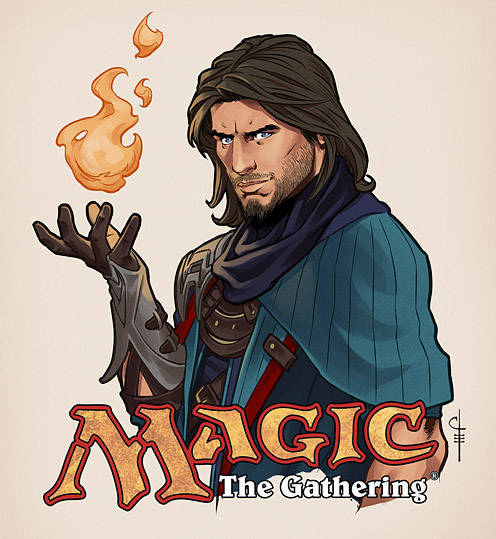
Dack Fayden by Chris Evenhuis
73 notes
·
View notes
Note
re: blocks. Character limit is really restraining my ability to convey this thought in its entirety. I think the recent asks haven't put to words the difference between 9 months worth of sets and the stories they represent. I believe it's less about having 3 sets worth of cards, but having an adequate amounts of stories to build the world and putting the named characters to paper. Theros Block didn't sell me on Theros, seeing the journey of Elspeth through the plane of Theros did.
Each set having the equivalent stories as a three-set block requires us tripling are amount of stories which is a huge ask for the creative team.
28 notes
·
View notes
Text
Nissa's Pilgrimage Part I: Worldwaker

Preface:
Hi there! My name is Steven; I recently wrapped up a master’s degree in library science and am doing my best to segue careers. Since my terminally long job hunt has left me with more down time than I ever wanted to have, I decided to put my English degree to good(?🤷) use by writing a bunch of personal essays on Magic the Gathering, as it is a topic I have been obsessed with for around a decade now. I didn’t intend to share these ramblings at first, and I began this whole project for my own edification, to keep my brain active, and to prevent myself going insane from boredom. However, I thought it couldn’t hurt to throw these online and see what comes of it.
This particular piece is part 1 of ???. I have a lot of notes in my drafts and even more thoughts in my head, so it may just go on indefinitely until someone (finally) gives me a dang job.
TLDR: I’m a deranged MTG Vorthos and former English major with a lot of thoughts and even more time on my hands, so I began a handful of English major-y essays on my pet topics. I’m posting them here for now.
Introduction:
Almost every Magic player who began learning the game after the planeswalker card type was introduced in the Lorwyn expansion in October, 2007 can tell you a story about the first planeswalker card they fell in love with. It might have been because the mechanics on the card melded perfectly with their preferred strategy of play, it might have been because they kept up with the story and were invested in the represented character’s journey, or it might have simply been because they thought the art looked cool.
For whatever reason under Mirrodin’s five suns a Magic player first became attached to a planeswalker and their cards, the character often become symbolic for our love of the game itself. These symbols grow beyond simple loyalty abilities on a piece of cardboard and become inexorably intertwined with our own personal Magic experience.
For me, this planeswalker was Nissa Revane.
You see, in March of 2014, I started working at The Game Closet in Waco, Texas. I had just finished getting a master’s degree in English, so of course, my first job out in the real world was to become a clerk at my local game store (really putting my humanities education to work). Having grown up in a small Louisiana town, I never had a chance to play Magic. I entered the tabletop gaming world through my obsession with Dungeons & Dragons, Shadowrun, and sundry other RPG’s.
Nevertheless, as Magic players made up the majority of the store’s customer base, I took it upon myself to learn the game. The Theros block was wrapping up at the time with its third set, Journey into Nyx, and a bunch of friendly players were more than happy to unload all of their bulk commons and uncommons to me (Journey into Nyx was famously underpowered, after all), so I tried to make a standard deck out of all this draft chaff and run it at Friday Night Magic.
It didn’t go too well.
However, I was happy with the overall direction of the deck, and I immediately discovered that I loved green decks, specifically green ramp strategies.
I was enthralled with the idea of accelerating mana so that you can play flashy, intimidating creatures and cool, game warping spells far earlier than you have any right to, so I continued to tweak the deck until I made a functioning version of the Theros Standard Mono Green Devotion deck. Even though I wasn’t good enough at the game in my early days to consistently win (even at the local level), I had a lot of fun with it! It was fast and explosive, but for some reason, I couldn’t shake the feeling that it was missing something.
However, not a few months later, the Magic 2015 Core Set gets released, and the chase mythic rare in the set’s early days was exactly the kind of card I was looking for: Nissa, Worldwaker. I had no idea who this Nissa character was supposed to be — though I did think the art looked pretty cool — but I was in awe of the card’s abilities! It was precisely the kind of fuel I felt my standard deck needed at the time, and it turns out I was right! My Magic the Gathering “competitive” “career” begins and ends with a handful of first place rankings at my local game store’s standard FNM events, but as small a victory as those are, nearly all of these top rankings were due to Nissa, Worldwaker.
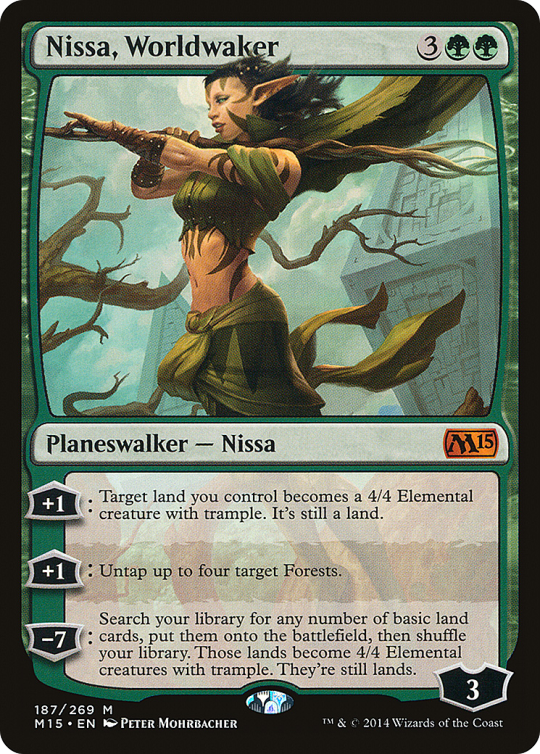
Needless to say, I became devoted to the character overnight.
Exploration:
But who is Nissa, really? Let’s start with the basics. Nissa is an elf planeswalker from the plane of Zendikar, a largely untamed wilderness where the land itself has a will of its own, causing unforeseeable (un)natural disasters called “the roil” by Zendikari locals. According to the recently-released Magic The Gathering: The Visual Guide by Jay Annelli, Nissa is in her 60s and she is 5 feet, 2 inches tall, making her the smallest of the original four members of the Gatewatch (five if you count Liliana). Nissa has a mystical connection to the land and can sense a plane’s leylines, giving her a measure of control over the ground she walks on; this allows her to animate the very land itself to fight her enemies, a narrative element that has been expressed mechanically time and time again on Nissa’s cards throughout the years.
Ostracized from the elven clan she was born in, the Joraga, for the crime of having this connection to the land (a rare brand of sorcery called “animism” in the lore of Magic), Nissa spent large stretches of years alone with only the spirits of the natural world as companions. This has made her socially awkward to a fault, and the issues she has in communicating with her friends (and later, lovers) has been a fairly consistent plot point throughout all of the (canon) story arcs she has played a part in.
In a fictional universe that contains ageless elder dragons, a man-eating toad, a sentient robot who literally created a planet from scratch, and a wizard who once phased an entire continent out of the time stream, Nissa Revane’s eternal struggle to express simple feelings to people she shares a bond with always seemed to me the most human element in the Magic canon. Additionally (big surprise), that’s something I have in common with her. While other Vorthoses have made the argument that Nissa is on the autism spectrum, that is something I have neither the personal experience with nor the education of to speak about. That is certainly a valid lens to view this character through, however, so if that interests you, I’d encourage you to search up these pieces on your own.
What I can speak on with a certain level of expertise, however, is the personal struggle of being a shy, withdrawn introvert in an extroverted world. As a lifelong wallflower with a vivid imagination and a rich inner world, I can deeply relate to a character who doesn’t know how to put her intense feelings to words. For example, in the final story of the Kaladesh arc, Renewal, Nissa tries to express to her companion Chandra just how deeply she wants to be “friends” with her:
Nissa swallowed past the desert in her throat. "I don't speak often. I lived alone for...decades. Zendikar was my companion. We understood each other at a level deeper than words. I...I don't know how to talk to you. I'm trying to learn."
Chandra looked up, eyes wide and startled. "You don't know how to talk to me?"
"I will make mistakes," Nissa said. "Pick the wrong words. Misunderstand yours. I'll act strange and won't know that I am. But if you can be patient with me, I would like to be..." Waves of sky-song memory welled upward, symphonies of color and warmth, resonant movement and shared breath. She stilled them, reduced them, and forced out angular words shaped in a pallid shadow of acceptable truth. "...your friend."
Chandra's hands leapt out to enfold hers, warm as a bird's nest. "I dunno," she sniffled, one corner of her mouth quivering upward. "I think you're pretty good at picking words."
"It took all afternoon to decide how to say this."
While this section of Renewal is a cornerstone of Nissa’s and Chandra’s future romantic relationship, that is a topic big enough to warrant its own essay in order to do it justice. For now, though, let’s focus on this bit: “‘I would like to be…’ Waves of sky-song memory welled upward, symphonies of color and warmth, resonant movement and shared breath. She stilled them, reduced them, and forced out angular words shaped in a pallid shadow of acceptable truth. ‘...your friend.’” Nissa’s never ending struggle to use words grand enough to communicate the intensity of the feelings in her heart has stuck with me since Renewal was posted on Magic’s website in 2017. I doubt I’m the only one, either.
Heroic Intervention
Nissa was already the character I was most invested in back in 2017, but observing her deep well of emotions she didn’t know to express and her entire lifetime's worth of interests and experiences she didn’t know how to talk about helped me, I think, come to terms the previous two-and-a-half decades of my own life that I spent cowering in corners at parties, being as unobtrusive as possible in the lives of my friends and family, and holding myself back because I didn’t think anyone would ever want me around - as a friend, as a lover, or even as a coworker. This section, from later on in Renewal, really gutted me at the time:
What would she do, if she had the time again? If she didn't flinch at light, noise, and touch, or speak in gestures and movements strange and off-putting to others?
How could she tell this new life to laugh and weep without reservation or regret; to sing to the stars and waters, or to nothing at all; to love unreserved and unguarded; to treasure every moment with those beloved; to forgive any regretted trespass; to dance when moved to; to savor long silences in warm company; to greet each dawn, each face with the thought, this will be an adventure; to be brave, and kind, and trusting, and...
...like Chandra.
The aetherborn waited, flickering. But why would anyone find her thoughts on the matter of value, anyway?
Don't be afraid to follow your heart, Nissa told them.
...Why would that be scary?
Halfway across Ghirapur, her body exhaled a laugh into the deepening twilight. May it ever puzzle you.
It wasn’t too long after this story was published that I began my own journey from hiding in the shadows to living my life in a way I was proud of. I moved away with the woman I was dating at the time, and even though that relationship ended up not working out, I spent five long, fun, life-altering years learning to
laugh and weep without reservation or regret; to sing to the stars and waters, or to nothing at all; to love unreserved and unguarded; to treasure every moment with those beloved; to forgive any regretted trespass; to dance when moved to; to savor long silences in warm company; to greet each dawn, each face with the thought, this will be an adventure.
I wonder to this day if the courage Nissa displayed during her own pilgrimage helped nurture in me the courage I needed in my own…
Conclusion
If you made this far, thanks! I’m not sure who, if any, will be interested in these endless ramblings, but if you're here, I hope you found something in it to enjoy!
Further entries in this little series will cover who Nissa is as a character, how she has been treated by various writers in Magic's various seasons, and why that matters (to me at least). The next longform piece I post will go over Nissa’s dual origins, why she was retconned from an incompetent xenophobe into the cinnamon roll with baggage we know today, and what both the Magic Story Team and its fans have made of this shift over the years.
References
Annelli, J. Magic The Gathering The Visual Guide. DK Publishing
Li, M., Digges, K., Luhrs, A., Beyer D., & L'Etoile, C. (2017). Renewal
56 notes
·
View notes
Text
Involved TTRPG Combat
I just wanted to give my own two cents on "involved" combat encounters in D&D and similar TTRPGs.
Generally give your players the expectations that combats are something to be solved rather than beaten. Communicate that with them clearly in order to create more fulfilling combat that isn't hitting things until no enemies are still alive.
Give combat encounters a goal. I'll list a few examples later, but generally you should think of what an encounter is meant to achieve for the players. Sometimes it's fine if it's just "an obstacle meant to be overcome", but this shouldn't be the only goal.
Consider tipping points, when it becomes clear that victory is certain for the player characters, but the combat could still continue. Create off-ramps for such encounters, where you can have a satisfying narrative way of ending it earlier. Fleeing minions after the leader has been killed is a classic.
Consider the environment. Cover, different types of elevation, and dynamic elements (vehicles, rotating gears, a rushing stream, etc) will make an encounter more engaging. This is more challenging to run theater-of-the-mind than with minitiatures/VTTs, but still doable.
Use different types of enemies in the same encounter. A simple way is to use both ranged and melee attackers, allowing your players with ranged options to pick off the enemies further away, while the melee-based heroes have their own enemies to deal with.
Have enemies with multiple phases. In 5e, enemies with the Mythic trait (mostly found in Mythic Odysseys of Theros and Fizban's Treasury of Dragons) are one example for this, as they gain more abilities the more damage they take. Alternatively consider creating monsters that consist of multiple stat blocks, where defeating certain parts of it changes what it can do and what your players can do to it. E.g. turn Mazaal from The Legend of Zelda - The Minish Cap, into a D&D monster.

I'm not good at making monster stat blocks, but imagine a construct with two hands (each with a distinct stat block) and a head that shoots beams from its eyes. The head has a Tethered trait that makes it invulnerable while the hands (that can grapple your heroes!) are still active. Once the hands are defeated the head starts jumping around like crazy, knocking over the heroes with shockwaves as it hits the ground. That sounds like a very engaging combat encounter to me!
Now when it comes to combat goals, here are a few suggestions:
Ensuring the safety of an escorted NPC or a valuable item that the party is transporting to a different loccation.
Keeping an enemy in a magic circle that allows it to be killed permanently, since it would otherwise just regenerate or be outright invulnerable.
Waiting for reinforcements as hordes of enemies attack the party, placing a timer on the encounter.
Preventing an enemy from reaching a specific spot on the map, such as an altar or a mechanism.
52 notes
·
View notes
Photo

Chromanticore
Large monstrosity, lawful evil
Armor Class 14 (natural armor)
Hit Points 102 (12d10 + 36)
Speed 30 ft., fly 50 ft.
Str 17, Dex 16, Con 17, Int 7, Wis 12, Cha 10
Senses darkvision 60 ft. passive Perception 11
Languages Common
Challenge 5 (1800 XP)
Tail Spike Regrowth. The chromanticore has twenty-four tail spikes. Used spikes regrow when the chromanticore finishes a long rest.
Prismatic Hide. Whenever the chromanticore is hit by a melee attack from a creature within 5 feet of it, that creature takes 3 (1d6) damage from a type randomly chosen from among acid, cold, fire, lightning, poison, and thunder. If the attack was a critical hit, that creature must also succeed on a DC 14 Constitution saving throw or be blinded until the end of its next turn.
Actions
Multiattack. The chromanticore makes three attacks: one with its bite and two with its claws or three with its tail spikes.
Bite. Melee Weapon Attack: +6 to hit, reach 5 ft., one target. Hit: 7 (1d8+3) damage.
Claw. Melee Weapon Attack: +6 to hit, reach 5 ft., one target. Hit: 6 (1d6+3) thunder damage.
Tail Spike. Ranged Weapon Attack: +6 to hit, range 100/200 ft., one target. Hit: 7 (1d8+3) damage.
Prismatic Breath (Recharge 6). The chromanticore breathes multicolored energy in a 30-foot cone. Each creature in the area must make a DC 14 Dexterity saving throw, taking 21 (6d6) damage on a failed save, or half as much damage on a successful one. The damage type for each creature is randomly chosen from among acid, cold, fire, lightning, poison, and thunder.
Chromanticores are strange versions of manticores that have prismatic magic imbued in their bodies. Their origin is unknown. They are around the same size as normal manticores, but are noticeably tougher.
Another creature from Magic the Gathering, the Theros block specifically, the chromanticore intrigued me as a monster concept, so I decided to break with my typical 3.5 monster conversions (again) to bring you this Magic the Gathering monster, statted up for D&D 5e. Don’t worry, more 3.5 conversions are on the way!
#thirdtofifth CR 5#thirdtofifth monstrosity#theros#mtg#magic the gathering#d&d#dnd#d&d 5e#dnd 5e#dungeons and dragons#d&d monster#d&d homebrew
281 notes
·
View notes
Note
If one were to want to summon you through the circle of mtg packs, what sets would get you moving fastest?
there's lots of old sets that i have insane nostalgia for so anything from either
return to ravnica block
original theros block
any core set from 2010-2015
but lets be honest, the best one to lay out is probably anything with really good hits in it like a masters set cause i loooooove cracking insanely expensive packs. probably my favorite thing to do actually
so depending on how good of a pack you lay out for me i can offer you a whole range of Demon Contracts™ to suit your needs >:3c
18 notes
·
View notes
Text
MTG: The Unstable Ground We Stand On
The year was 2013. Gatecrash had just come out to mixed reception, but I didn't even know what Magic was. I was in high school, and my best friend (at the time) was on a vacation to Disney World. So, I went to sit with my second best friend, but couldn't find them. That's when I found an old friend of mine playing a card game with them, and that game was Magic. I learned about it, looked into it, played Duels of the Planeswalkers (remember when that was a thing?), and decided it was for me! Now, I could have gotten a starter deck, but I was laser focused on one thing: A box that said Core Set. This was the M14 Deckbuilder's Toolkit, and I got it because that's what all my friends started Magic with. Granted, that probably wasn't the smartest idea, but I'm the type to jump off the deep end; if I'm getting into a hobby, I may as well make sure I'm prepared for the long haul. The Deckbuilder's Toolkit had everything I needed, the start of a collection, and most importantly? Lands. It had lands. You didn't need to buy them from a game store for up to (or even exceeding) a dollar a pop. You didn't have to rely on people liquidating their collection to stock up. You could just buy a box and have land cards to build decks with, and I remember buying toolkits just for lands and boosters. Now, you can't do that. If you're just getting started, you either have to borrow them, switch them between decks, open them in packs, or buy them on the secondary market. (That last one is pretty ironic, because Wizards of the Coast has a rule against acknowledging the secondary market.) And, yet there's no reasonable, mainstream way to get land cards. Some game stores will let you keep them after an event, but I've only been to one store that did that. (Read: did. They don't anymore because people weren't saving enough for others.)
Back on topic though, long time players probably made note of the time I started Magic; I started with Magic 14, which came between the Return to Ravnica block... and the Theros block, widely regarded as one of the most heavily unbalanced and mechanically awkward blocks of its time. So, after that, people reasonably wanted a palette cleanser, and they had it. The Tarkir block was amazing despite being chronologically confusing, but in the storm of chaos, there was warmth. The Core Sets would always be there to serve as the foundational building blocks, and get this; they gave players a moment to see where the main characters were on their journeys. These weren't just foundational gameplay wise, but story wise, and gave WotC a moment to show everyone what's going on in the background. They also ensured that, between the sets with heavy mechanical ties or complexity, there was always solid ground to stand on. New players could seek out these Core Sets as a good starting ground, and experienced players found themselves in familiar territory with highly desired reprints. However, despite no reasonable player protesting against Core Sets, the vocalization of players wanting more of their favorite planes was taken in a way that was bad for everyone (in my opinion).
After Magic Origins, the game switched to a two set block system, and suddenly lost the Core Set. From a game design standpoint, this is doomsday. This is how TCGs die if they don't have a dedicated, permanent selection of cards, and yet Magic somehow survived to realize their mistake. In the background, however, they were still making a more gross mistake, trying to capitalize on Elder Dragon Highlander. Around the time I got into Magic, they'd begun making Commander decks, and at first these weren't too problematic. They were once a year drops that let players get into this entirely different casual format. While Standard was limited on card selection, and Modern and Legacy a coin flip simulator, Commander allowed players to throw their collection into the ring without regard for the hottest cards. The general consensus was that you could play what you wanted, whether you had a few Standard sets worth of cards or flocked to Modern, Legacy, and Vintage.
Fast forward to War of the Spark. Now, the two block system was dying. The war on blocks had begun, with Mark Rosewater practically blowing off anyone that critiqued the change with the same "this is what you wanted, right?" Players really wanted to see previous planes, but instead of Wizards trying to revisit them in earnest, they shifted into rapid fire mode. With only one set per plane now, they began spitting out half-baked revisits that barely touched upon older planes, and tore through new planes and major events without putting much thought into them. Stories would begin to go undercooked, and with every "you wouldn't want to be stuck on a plane you don't like" from MaRo, an interesting plane or event is left unexplored past the surface level. Additionally, to add more ammo to this machine gun of mistakes, they threw the Core Set in the trash. They tried to kill it off once and realized their mistake, but after Adventures in the Forgotten Realms it was dead for good. Looking at things now, this has all caused Magic to fall apart.
Magic is the worst it's ever been for any player that isn't wholly invested in and unwaveringly loyal to the game. The beginner has the worst footing in many years, with the Local Game Store forced to leverage all the responsibility for getting new players into the game. Players who want to learn can do so for free, but the first step into the door beyond learning is a brick wall. Starter Kits have finally made a resurgence, which is a step in the right direction. However, you likely wouldn't know they existed if you didn't look online, which is antithetical to the fact that you'll usually have to go to a game store in order to play in events anyway. Additionally, with MSRPs being stripped off many products, it's the most expensive (even relatively speaking) it's ever been to start playing. As for experienced players? The story is the hardest it's ever been to keep up with, thanks especially to the fact that an entire plane's story has to start and end in one set. Players should be able to get the gist simply by looking at the set, but instead, hastily written stories with declining storytelling aspects do most of the talking (and it's assumed you've read them). This problem is becoming painfully obvious now; basically everyone that's died recently has been brought back to some extent, making it apparent that the folks in charge of story direction are leaning on old planeswalkers instead of innovating with new ones. Mu Yangling and Jiang Yanggu, Basri Ket, Niko Aris, Calix, Kasmina, Davriel, Dack Fayden, and Wrenn have either been ignored or cut from the story. Meanwhile, every member of the original five planeswalkers has completed their story arc and suffered some major fate that should have ended their tale, and yet they've all come back; Ajani and Jace were compleated, Garruk was corrupted by the Chain Veil, Liliana was hunted down, and Chandra was forced to face her corrupted fling Nissa. All of them are now totally fine, with Jace set to appear in Outlaws of Thunder Junction.
That's just scratching the surface of problems plaguing veterans. From a gameplay perspective, Standard is the most complex it's ever been, thanks to a three-year cycle being introduced and a constant torrent of increasingly complex mechanics. From a financial perspective, products aren't just the most expensive they've ever been, but there's basically a new product every single month now. Unless you stick to a single format (which can still be wallet-busting in its own right), you're bombarded with new content. Experimentation is great, but with the constant output, Wizards is forced to compete with itself; this has led to the worst level of power creep in many years. (You could probably reprint the Mirrodin block into Standard at this rate and only have to ban Skullclamp.) Every format has been turned on its back by the creep, from evoke elementals plaguing every deck in Modern to companions haunting Legacy and Vintage; worst of all, however, has been the fact that Standard is incredibly difficult to innovate in because of just how many blatantly busted cards are being printed. Oko was the thunder in the distance, and a storm has been pelting the format at increasing intensity since. We've reached a point where many blatantly powerful cards are considered fine in the format, because Wizards would rather keep bombs like Sheoldred, the Apocalypse legal than go on a banning spree for every seriously problematic card.
The worst part about this is that we likely wouldn't have reached this point if we still had a Core Set every year. The intentionally dumbed-down power of Core Sets is part of what helped keep power creep in check, as they couldn't go too far if they wanted to make the cards relevant. The ability to reprint many cards back into Standard gave players a comfortable baseline, let new players enter the game more easily, and made it easier to acquire classic cards. The break in the story allowed us to get a better look at where planeswalkers were and what they were doing, or it let us step back to see their history. It let Wizards introduce new characters more freely, not having to worry about their immediate implications. And, most importantly. if it was still around, there'd be far less arguments for one set per plane.
8 notes
·
View notes
Text
Oh dang! Was poking around the minor characters section of the Magic wiki and discovered there was a story during original Theros block that was a riff on the "Pyramus and Thisbe" story only with a gay couple, Pavios and Thanasis. You can read it here if you want to, content warning for those unfamiliar with the original myth it does involve suicide. I've already added them to my queer Magic characters list. I've never seen anyone mention them.
6 notes
·
View notes
Text
Cornwall's Random Card of the Day #743: Satyr Wayfinder

Satyr Wayfinder is a common from Born of the Gods, seen here in some commander thing.
Man, people talk about Born of the Gods cards being crap, but this dude is great! Mulch on legs, I'll take it! Okay, okay, not as good as Mulch since it can only get you the one land. But it IS a creature, for a deck that can probably recur creatures easily. I never played Theros block, was there a b/g graveyard theme in it?
6 notes
·
View notes
Text
The take away from the reactions to initial main lore story of March of the Machines is interesting.
1)Some people seem to have very rose coloured nostalgia glasses from the original Phyrexian invasion story line. “There were so many deaths though.” Sure, most of them were needless, many of them were fridging. “But at least the ending wasn’t some eleventh hour ass pull!” … You sure about that?
2)”This was no stakes and set up in a year.” Mirrodin was 2003-2004, Scars block 2010-2011, parts of this have been set up and hinted at for 13-20 years, Every mention of New Phyrexia in a updated card art or small story blurb was a lump in the throat of people worried that at any moment they were going to fridge and body horror favorite characters. The first part of this final act was in Kaldheim and that was 2 years ago now and had 4 sets in between that barely touched upon them extending the tension.
3)’Why did other planes not roll over’- A few things here… one, Phyrexia was born out of and intimately tied with and entwined with dominaria for millennia. Phyrexia learned to Phyrexia based on how Dominaria reacted to it and even Mirrodin was created by somebody who had primarily dominarian roots so their knowledge of the multiverse is limited to Dominaria more or less. So they are really really good at fighting dominaria. And that can get you some distance with other planes but only so far.
A major take away from the story of All will be One is how home field advantage and people there knowing you are coming can really mess up your plans of insurgency. Norn then proceeded to ignore that lesson and stage a simultaneous multi planar incursion of multiple territories most of New Phyrexia has a passing knowledge of at best.
Because for how powerful the praetors are, all of them are dogmatic fanatics with no real infamous tactician among them. And because fanaticism is built into New Phyrexians I don’t know if they could ever get one sober enough to account for any weakness they might have. So that explains why they might have easier times with places like Theros because of their predisposition to believe but a harder time in a place like Ikoria or Innistrad.
Also, it was so close. Like razor’s edge, and the outcome was pyrrhic.. like it was not a decisive victory… the Phyrexians had hubris and it blew up in their faces but only after we were shown time and again then reasons they had such hubris in the first place.
I liked it. I think it was better executed with less corporate meddling than war of the Spark. I think the stories allowed more of the Planeswalkers to have actual arcs and things to do. I do not like how reliant it was on body horroring and fridging of most of my favorite planeswalkers for the sake of emotional investment and how the strength of the Phyrexians as an enemy is that ‘they win until they lose’. Which upsets the other contingent of people really hoping for the phyrexians to win for good or more decisively for the opposite reasons.
We should probably see more of it play out on the cards and we’ll see how Aftermath figures into it. There are quite a few lose ends with implications I don’t like but hopefully we can have different types of stakes for a bit this was emotionally exhausting for me.
29 notes
·
View notes
Text
With Commander Masters dropping I thought it’d be fun to dig deep and go back to when I first started playing and some commanders people ran.
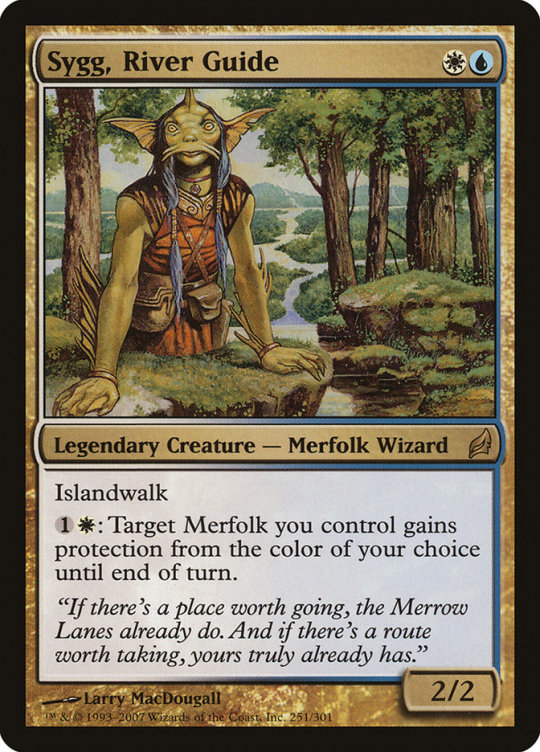
You probably remember Sygg River Cutthroat, the dimir legendary from the rogue deck. Here’s his more pleasant self! A merfolk saboteurs deck in azorius. This means you find lots of ways to get combat damage for value, with merfolk the easiest way is make someones land an island and start swinging. Protection helps with combat, stops targeting, and prevents red board wipes!

Heroic was in the original Theros block, a mechanic that rewards you for casting spells that target a creature. This is a deck that turns that one spell into an anthem and trample for your field! The trample enabling is especially juicy, and there’s a number of relevant cards in boros like Boros Charm and Temur Battle Rage.

Lazav 1.0 is probably my favorite commander when it comes to milling. He’s entirely fair: he’s only as strong as what your opponents run and he punishes building with bomb mythics over synergy. Discard, kill, and mill all trigger him. Retaining Hexproof is nutty too when you get something indestructible. He’s a fantastic minigame that continues as you forward your mill.
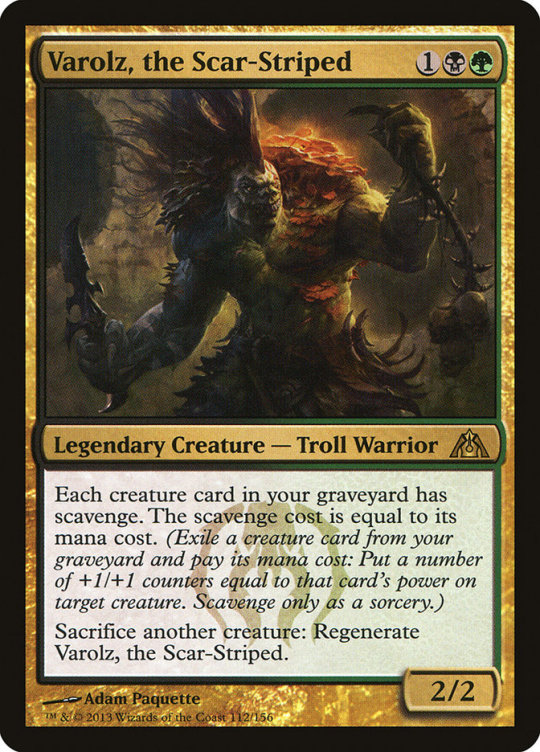
Varolz is a card I can never remember the spelling of. He uses a mechanic called Scavenge: exile a creature card from your gy and pay its cost, put that many +1/+1 counters on your dude. There are tons of low mana creatures with stipulations like Death’s Shadow and Lupine Prototype that fit the bill, giving you a super unique counters build. His sacrifice for regenerate means nothing short of exile, -X/-X, or bounce is gonna remove him all tied up in a useful 3 drop.
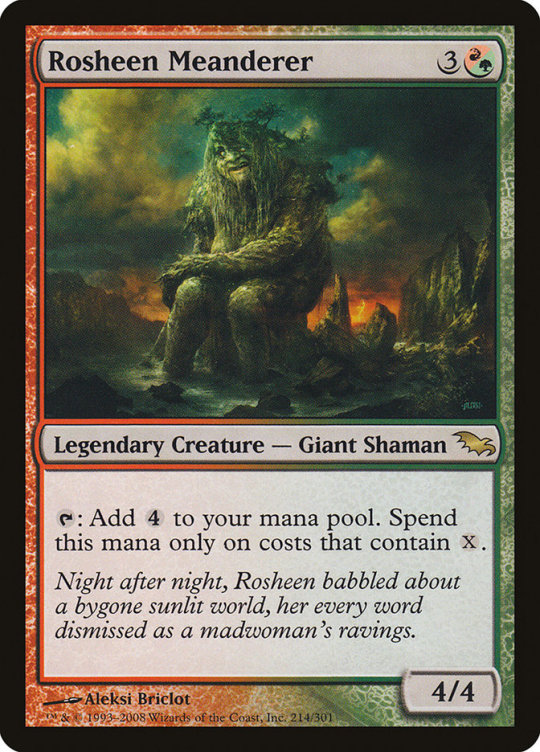
Rosheen Meanderer funnee. You have green and can go absolutely nutso with ramp letting you go absolutely nutso with your X costing spells. And having a commander give you 4 extra mana towards them can do a whole lot. There is the sultai hydra X cost commander from Ikoria, but this lets you use burn as a strategy.
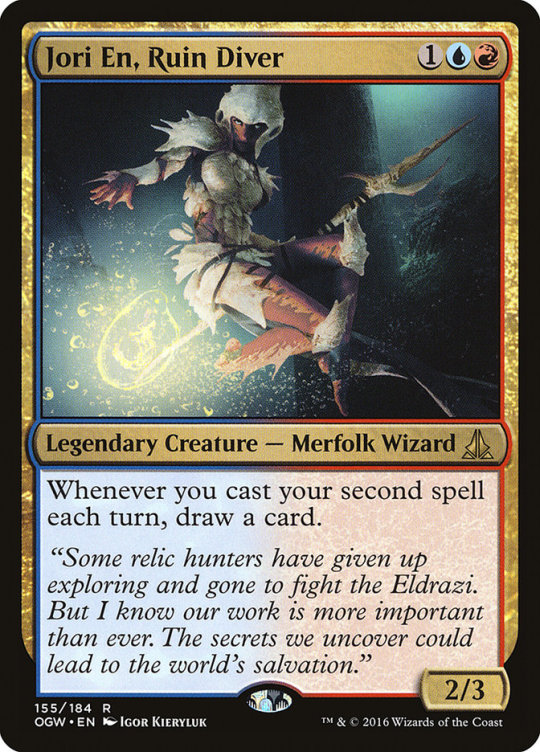
Jori En is the best izzet commander no one uses. The idea is simple: cast two spells a turn for a card. Jori En draws me So Many Cards each game its unbelievable. I’m casting two spells on my turn, on your turn, on the next turn. This is letting Talrand make a shitton of drakes. Lots of token generation in this build, its very fun.
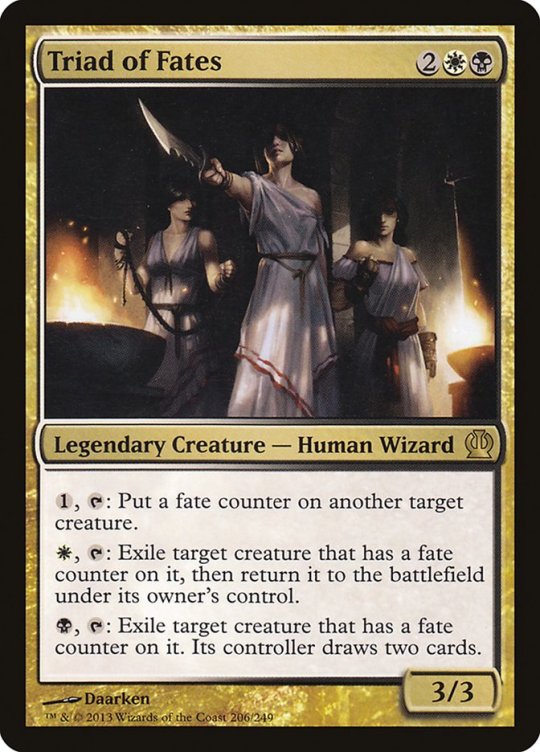
Orzhov is usually known for its sacrifice but what about its flicker? Triad of Fates allows you to start fate countering yours and your opponents stuff, its slow so you’ll need untap effects to get good use out of it. Their second ability allows you to remove your opponents’ stuff or draw off your own!
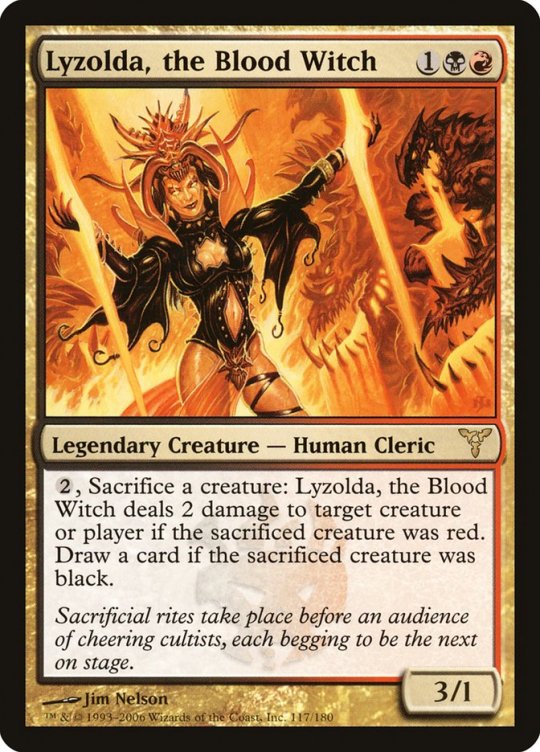
Lyzolda allows you a sac outlet in the command zone and draws off your sacrifices if they have black. That’s in conjunction to the test of your synergy. The 2 damage on red sac isn’t bad either, using it on small drops is great, and equipping her with Basilisk Collar for deathtouch and lifelink goes a long way.

In the before days wotc used to print lots of different kinds of products besides standard, edh, and masters sets. Krond comes from the second planechase set, a selesnya auras build. I love that mana cost, its so juicy. Something that 100% supports devotion tech in either color. Vigilance also makes him a great mid to late game drop and that you don’t have to connect, you just have to swing to exile is huge. Great base stats and keywords before enchanting makes him a monster for voltron or in an auras build.

One of the best yet simplest simic commanders, Zegana becomes one more bigger than your highest power creature then you draw that many cards. A perfect play after you’ve established your field and ran out of hand. Works for counters, sea monsters, general ramp builds, Zegana provides you with a beater and gets you back in the game with card draw.
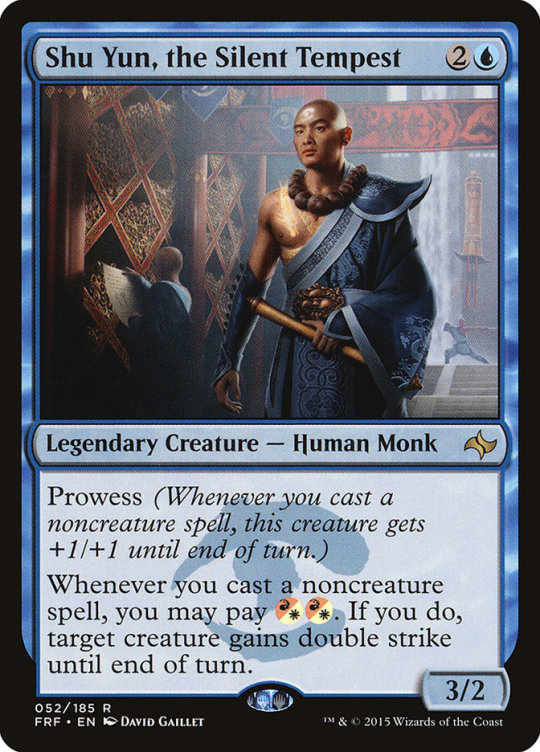

While I wanted to stay in two color there’s two special mentions I wanted to touch on. Everyone knows Alesha and Tasigur but they were two cards of a cycle. Shu Yun pairs so well with new Narset, after Narset free casts you pay two to give something double strike. If you pick Shu Yun thats two prowess triggers and he’s a 6/4 double striker.
Yasova has interesting tech for power matters. For 3 you can steal a smaller dude for combat. Yasova herself has trample making buffing her worthwhile, and in temur colors this can be turned around into a fun power matter strategy with buffs, doublers, etc.
16 notes
·
View notes
Text

Ten years ago today saw the release of Magic the Gathering's 63rd expansion set, "Born of the Gods". It was the second in the three block set of Magic's first visit to Theros.
5 notes
·
View notes
Note
Would saying that Baldur's Gate Wilderness is the same sort of "card" as Garruk the Slayer and the ones made for Theros block's Hero's Path be an accurate statement?
Yes.
30 notes
·
View notes
Text

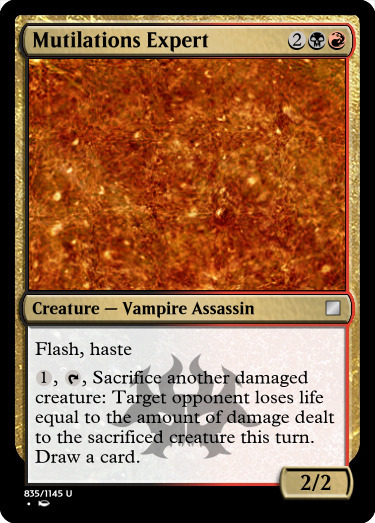
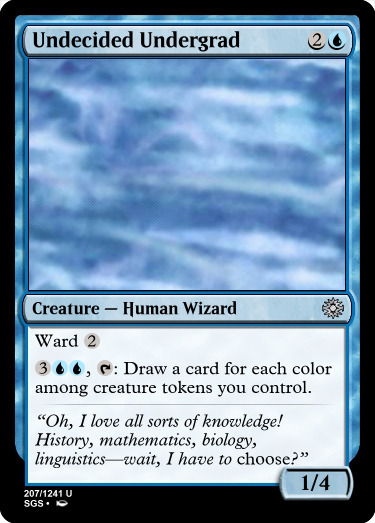
For each victor—a victory!
~
Our winners this week are @hypexion, @misterstingyjack and @nine-effing-hells!

@hypexion — Priestess of Ashtear
This card raises questions about the world that I enjoy exploring. Therosian or not, the concept of sorting through the ashes and bringing ghosts from the notions, whatever they may be, is solid. There's the entity of Ashtear (a new deity, or portmanteau?) that—well, 'ash' is right there, and perhaps it's the silver-grayness of it all, but I'm simply having an easy time getting the character's mojo settled clearly in my head. I think "dead" doesn't need to be in the flavor text for sentence flow, but the card's doing a great job in all other aspects of its presentation. There's a ghostliness that distinguishes it from the auras of Theros and the macabre of Orzhov.
Moreover, the delirium aspect is without delirium; it's precise, constructed, and counts for what is presented, not reaching for a specific number. We take what we can get. You'll probably end up with 3-4 spirits naturally, and for an uncommon, that's a solid late-game drop, perhaps even early-game if you can knock off both a removal spell early and an enchantment creature dying in combat. Very powerful as an aggressor and as a blocker to spread out the late game. Should the "create a..." part come before the "for each" clause, like how Avenger of Zendikar does? I think so, but don't let these small bumps take away from the fact that this card, in its simplicity, pulls off some tasty vibes.

@misterstingyjack — Mutilations Expert
I'll be a damned clown—"damaged creature" appears on exactly one Phage vanguard card, but it certainly appears. Is that precedent? It's precedent enough for me. The thing I like mechanically about this card is that on your turn, you can slide in that extra damage after your opponent thinks they've made a good block, and on your opponent's turn, they'll be calculating their attacks without calibrating for the surprise life loss. How long are damaged creatures going to be staying around? I suppose it all depends, but Footlight Fiend makes even your big boys stickaroundable for the flinging. Plus, with chump-blocking, this makes some combat tricks much better.
But Rakdos sacrificing its wounded creatures really is new territory for me to consider. Fresh meat is what it is, but the stabs make it all the more enticing. Truly, this is something that makes the deckbuilding a lot more complicated. How are you going to change up your gameplay? Will your opponents know? My guess: probably not. This card might not define an archetype but it could see waves in the right deck. It's certainly made me want to think about how to make it happen, y'know? Also, name: on point. Typeline: definitely on point. Aren't the Rakdos fun?

@nine-effing-hells — Undecided Undergrad
Now, I'll be honest: this is the card that I feel I have to defend the most. The flavor text needs heavy paring and editing, and the cost of the activated ability could be reduced IMO. Ward I'll defend just because—well, this student needs defending. The good news is that I played a helluva lot of Strixhaven, and moreover, this got me thinking about the incredible deck that could be made with this card. You and I both know that one person who's gonna get as much fixing and token generation as they can before drawing themselves out and having a blast doing it. It's not easy to get all five colors, but you can try. Getting a five-color token ain't a walk in the park either.
This card's got such a good feeling connected to its gameplay. Hugely positive, hugely inventive, and moreover, this card actively resists an archetype. I think I'm going to be going into the rest of the commentary with those considerations, genuinely! I think that there are some deckbuilding techniques that speak to people looking to solidify a concept, and some that speak to the weirdness and the fringe benefits of going in XYZ direction. If that's not wholly related to the mood that this card is bringing, I don't know what is.

Runners and commentary coming up.
@abelzumi
6 notes
·
View notes
Text
Not to bitch about MTG on main, but like I really REALLY hate how MTG makes a story. I feel like the 3-block-sets which took a year to come out really got me invested in the story. I literally lived and died by Return to Ravnica, Khans of Tarkir, Theros, and Innistrad as actual sets. The stories felt more real and significant. I could fall in love with the characters.
It seems today like the characters are mere caricatures. I know very little about Lukka, I care very little about Tyvar. I couldn't care less about Strixhaven, Ikoria, Eldraine, or Kaldheim. There's too little worldbuilding and everything is too rushed to actually be appreciated beyond the bare minimum of cookie-cutter story.
I started feeling this way during the Kaladesh block. I was really excited for Kaladesh, since the eldrazi story had been wrapped up I felt that there could be a new and exciting story told within the confines of the gatewatch's exploration of Kaladesh. However, I didn't really find it all that intriguing and the gameplay was so toxic that I had to leave standard and choose a new format. Every time I went back to standard, or even draft after Kaladesh, I felt exhausted and overwhelmed by the sheer power creep in only a few years. I remember when siege rhino was the worst creature to deal with in standard midrange... Now I doubt that card would even be played.
I bet a lot of this is nostalgia. I started playing in 2008, and I was in middle school then. However, the power creep, the lack of attention to planes, and the overwhelming amount of product releases have really burnt me out with this game.
That's not to say the game is bad. I play MTG literally once every 2-3 days and I still love this game. I have like 8 commander decks fully built, and I go to LGS events at least once every two weeks to play commander. I just really miss when the game was less yu-gi-oh-esque.
14 notes
·
View notes